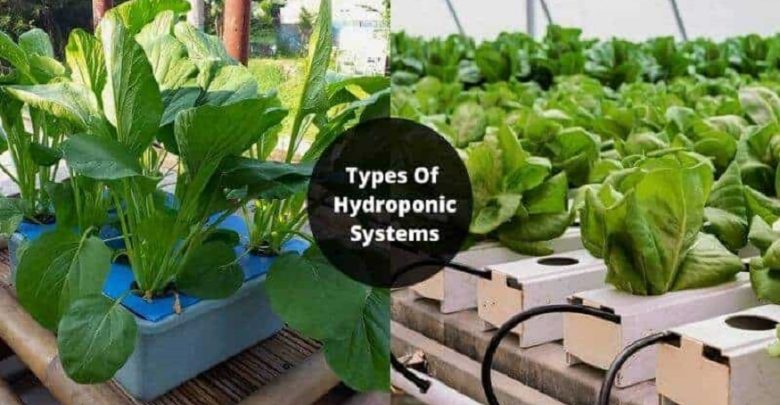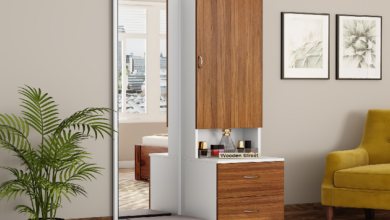6 Types Of Hydroponic Systems – Core Concept Of Hydroponics Farming

Hydroponics is the cultivation of plants. The plant’s root system is exposed directly to the nutrient solution; the plant does not have to exert any energy in sustaining itself. Hydroponics works under an elementary principle: provide plants precisely what they need when they need it. Instead of roots, substances such as peat moss, clay pellets, and perlite support plants’ roots.
Hydroponic systems operate by allowing precise control over environmental factors like temperature and pH balance to maximize exposure to nutrients and water. There are hundreds of variations of hydroponic systems available. However, all variations center around only six types of Hydroponic systems. Each of the six hydroponic systems works differently, and they have their own advantages and disadvantages. This post describes the types of hydroponic systems.
Basics Of Hydroponic Systems
The way hydroponic systems work may seem challenging at first, but it is quite simple once you understand. There are six fundamental types of hydroponic systems that are Drip System, Ebb & Flow, N.F.T., Water Culture, Aeroponics, and Wick. There are three requirements of plant roots that are water/moisture, nutrients, and oxygen. What makes these six types of hydroponic systems different is how they deliver these three kinds of stuff to the plant’s roots. Each hydroponic system is described in the following points.
Types Of Hydroponic Systems
Wick System
The wick system, also known as passive hydroponic, is the simplest type of hydroponic system and the only system where you don’t need any aerators, pumps, or electricity. Plants are supported in absorbent substances like perlite or vermiculite. Then wicks, mainly nylon, are used to supply nutrients to plants. This is best suitable for smaller garden plants and herbs.
Water Culture System
A water culture system is also a basic hydroponic system that involves direct exposure of plant roots into the nutrient solution. Unlike the wick system, the water culture system does not use a solid medium like peat. Oxygen is supplied using a diffuser—even large plants with sizable foot systems. Plants show vigorous growth in this hydroponic system. The only downside of this hydroponic system is the high chances of root diseases.
Ebb And Flow System
This hydroponic system is popular among home gardeners. In the ebb and flow system, you have to place plants in a spacious grow bed packed with a growing medium like rock wool or perlite. The nutrient solution is supplied in the medium up to a point when there is no overflowing; you need to use a water pump with a timer for this purpose. This hydroponic system is efficient in growing all types of vegetable crops, including root vegetables like carrots and radishes. The common problem in this hydroponic system is the malfunction of pumps.
Drip Hydroponic System
A drip system is a versatile hydroponic system where you can easily alter different types of plants. The nutrient solution flows through a tube that holds the plant’s base. You can adjust the amount and flow of nutrient solution. The circulation and Size of the systems are easily adjustable. The issue with this hydroponic system is after recirculation, there is a hassle while maintaining the changing nutrient and pH levels.
N.F.T. ( Nutrient Film Technique) system
The N.F.T. system is prevalent for its simple design and multitude of applications. It has a set up where you flood the nutrient solution with a pump solution in a sloppy channel. As excess water flows, the roots of each plant get the required amount of nutrients. It would be best if you prefer plants with smaller roots. It does not respond well with larger plants but a large number of plants at the same time. Since it scales well, this system is commonly utilized by commercial growers alongside home growers.
Aeroponic Systems
This aeroponic system has sophisticated mechanisms for building but easy to understand also. In this hydroponic system, a couple of mist nozzles directly connect to pumps that are in the position below the plant. With the correct dimension of the reservoir, This hydroponic system can grow nearly all types of plants. The major problem with this is the clogging of nozzles.
Hydroponic Systems At A Glance
Initially, hydroponic systems working may seem complicated, but you get familiar and understand its basic principles; it’s quite simple. The hydroponic systems only differ in delivering three things, water/moisture, nutrients, and oxygen to the roots. Apart from these six types, all other hydroponic methods are combining two or more of the six types. There are tons of ways you can create variation by altering each system or any system aspect.



